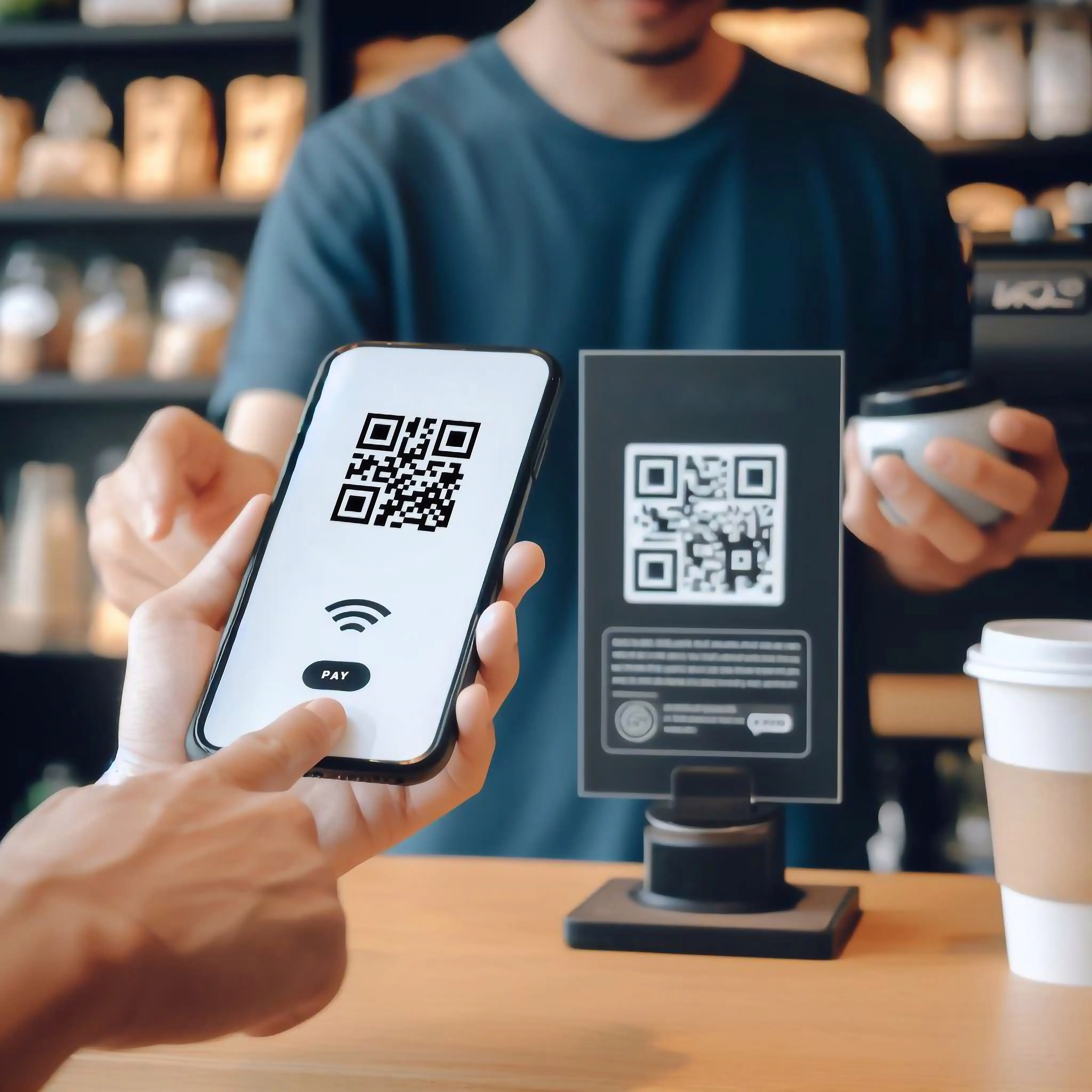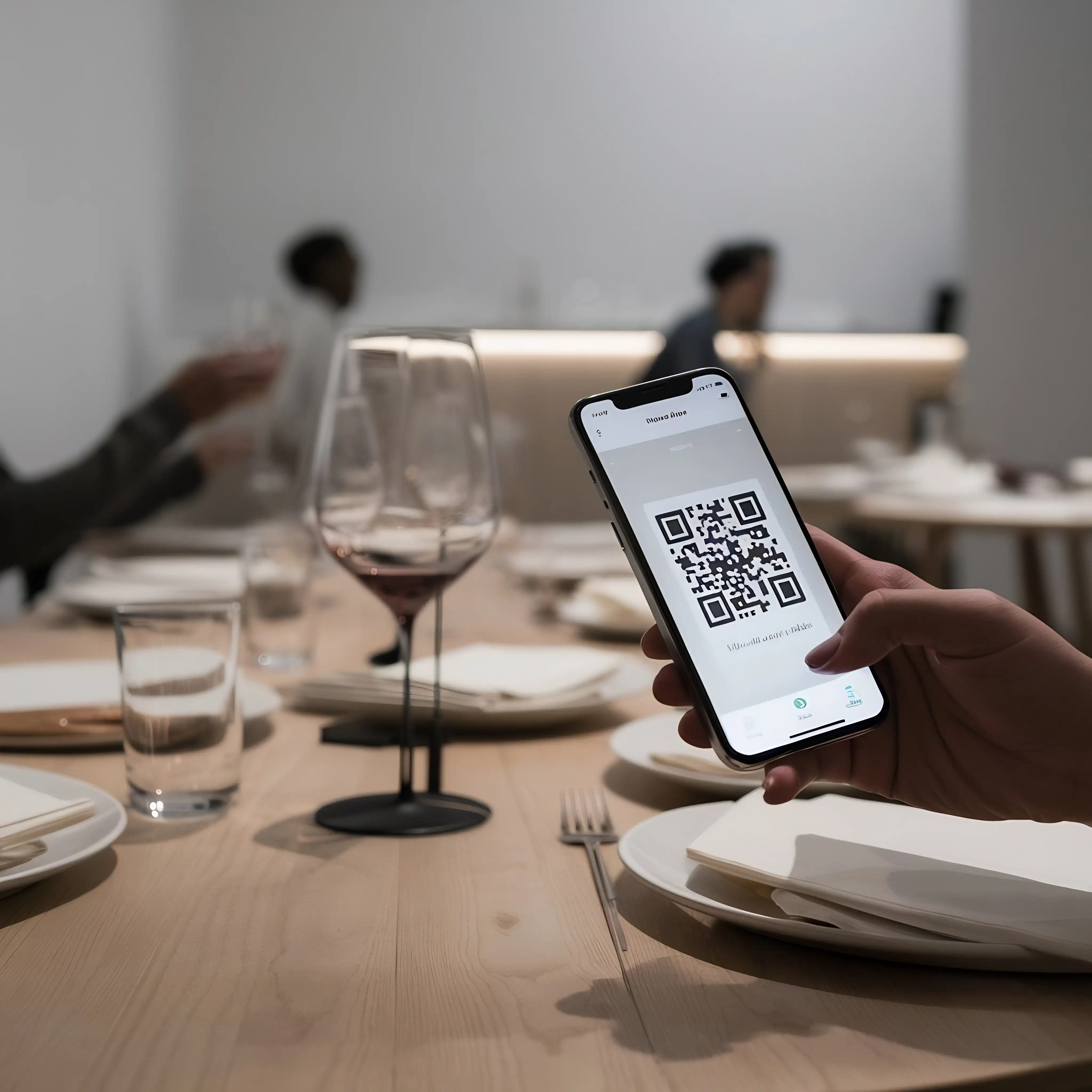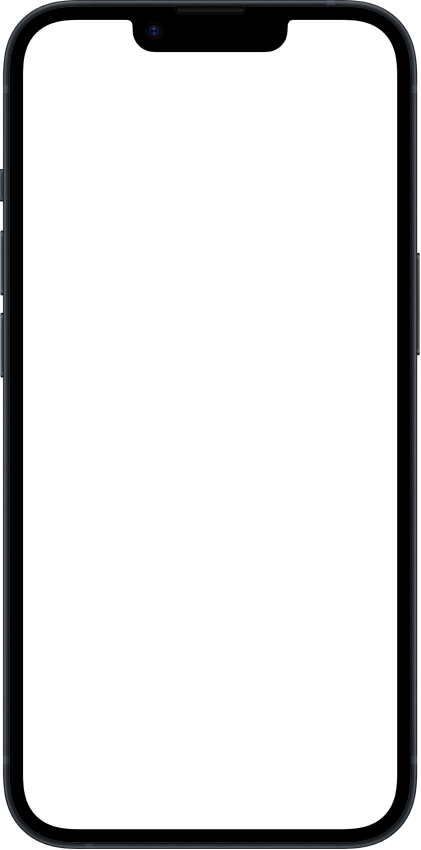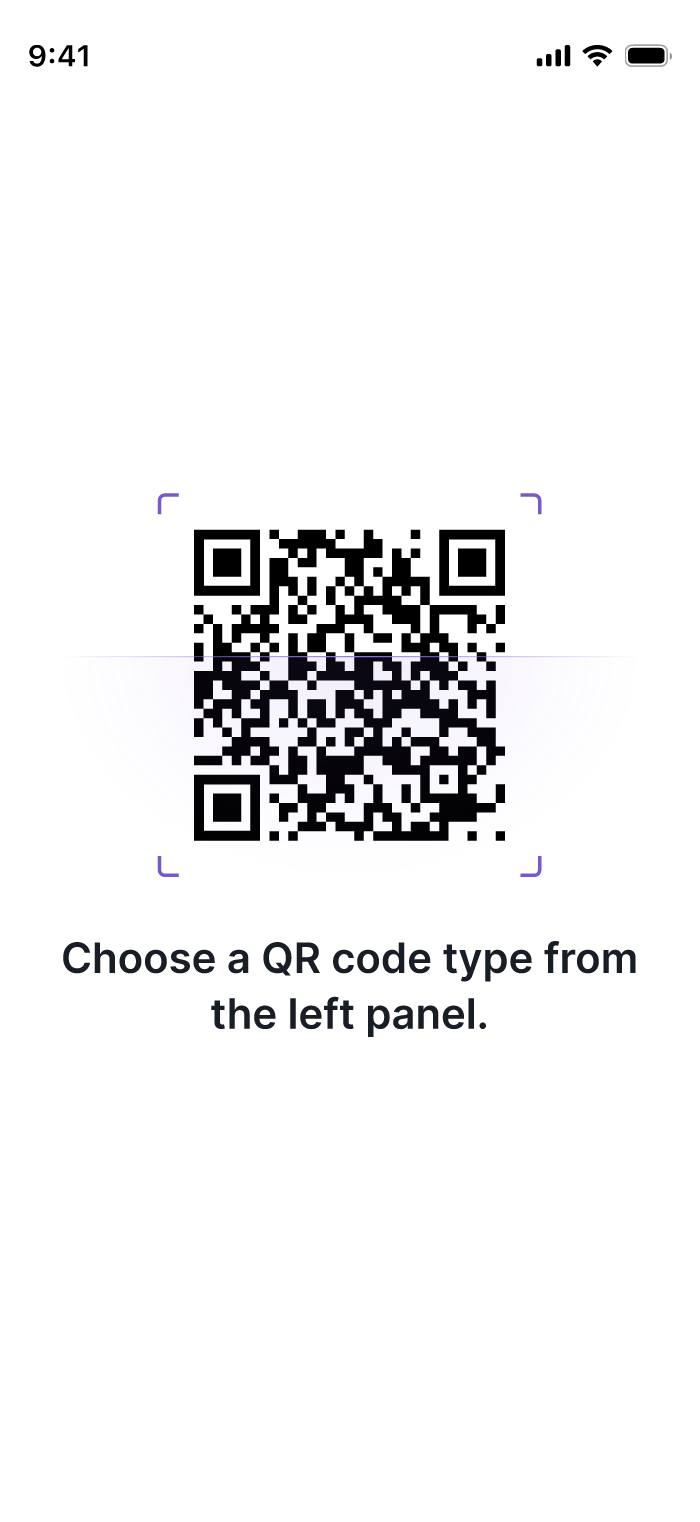QR Rapid
Create a Menu QR Code – Share Digital Menus Instantly
Transform your restaurant menu into a scannable QR code that customers can access instantly from their smartphones. Eliminate printing costs, update dishes and prices in real-time, and provide a contactless dining experience. Perfect for restaurants, cafes, bars, food trucks, and catering services looking to modernize their menu presentation.
No Credit Card Required
Real-Time Analytics
Edit & Customise Anytime
Want to generate other QR code types?
Menu
Create a digital menu
Menu
Menu
Create a digital menu
Website URL
Send users to any webpage
Website URL
Website URL
Send users to any webpage
Wi-Fi
Let users connect instantly
Wi-Fi
Wi-Fi
Let users connect instantly
Start a chat with one tap
Start a chat with one tap
Image
Showcase visuals
Image
Image
Showcase visuals
Coupon
Unlock special offers
Coupon
Coupon
Unlock special offers
MP3
Share audio directly
MP3
MP3
Share audio directly
Video
Play a video instantly
Video
Video
Play a video instantly
Open an email draft
Open an email draft
Text
Display simple text
Text
Text
Display simple text
vCard
Share contact details
vCard
vCard
Share contact details
Crypto
Accept Crypto payments
Crypto
Crypto
Accept Crypto payments
List of links
Share everything in one place
List of links
List of links
Share everything in one place
Show a downloadable file
Show a downloadable file
SMS
Trigger a text message
SMS
SMS
Trigger a text message
Event
Promote an event
Event
Event
Promote an event
APP
Link to your app
APP
APP
Link to your app
Social media
Link all your socials
Social media
Social media
Link all your socials
How to Create a QR Code for a Menu
Creating a QR code for your restaurant menu is quick and simple with QR Rapid's QR code generator. Follow these three steps to digitize your menu:
Upload or Create Your Menu
Upload your existing menu as a PDF, create a digital menu using QR Rapid's menu builder, or link to your online menu page. Ensure images are clear and prices are current.
Generate and Customize Your QR Code
Create your menu QR code and customize it with your restaurant's logo, brand colors, and an appetizing frame. Add text like "Scan for Menu" to guide diners.
Display at Tables and Entrances
Download and print your QR code for table tents, stickers, posters, or window displays. Customers scan to view your full menu instantly without waiting for physical menus or staff assistance.
Digital Menus That Update in Real-Time
Modernize dining experiences with Menu QR codes that replace static printed menus with dynamic, always current digital versions. Restaurants, cafes, and hospitality businesses use Menu QR codes to showcase dishes with vivid imagery, highlight daily specials, accommodate dietary restrictions, and update prices instantly all while reducing printing costs and enhancing food safety through contactless browsing.

Coffee Shops: Beverages and Pastries at a Glance

Catering Services: Event Menu Presentation

Breweries & Wineries: Tasting Menu Display

Cafeterias & Dining Halls: Daily Specials Updates

Ghost Kitchens: Digital-First Menu Strategy
Convert Menus to QR Codes Instantly with QR Rapid
QR Rapid makes it simple to transform traditional restaurant menus into dynamic digital experiences. Whether you're running a single location or managing multiple restaurants, our platform provides powerful features designed to enhance customer experience and streamline menu management. Create, update, and distribute your menu QR codes effortlessly.
Real-Time Menu Updates
- Change menu items, prices, and descriptions instantly without reprinting
- Add daily specials and seasonal items in minutes from any device
- Remove sold-out dishes immediately to prevent customer disappointment
Rich Menu Content
- Include high-quality food photos that entice customers and drive orders
- Add detailed descriptions, ingredients, and allergen information for each dish
- Integrate nutritional facts and calorie counts for health-conscious diners
Multi-Language Support
- Display menus in multiple languages automatically based on user device settings
- Serve international tourists and diverse communities with translated menus
- Expand customer base by removing language barriers from dining experience
Order Integration Options
- Link directly to online ordering systems and delivery platforms
- Enable table-side ordering through integrated menu and payment solutions
- Connect with reservation systems and waitlist management tools
6 Effective Menu QR Code Implementation Ideas
Table Tents & Stands: Permanent Table Placement
Place menu QR codes on durable table tents, acrylic stands, or laminated cards that remain on every table throughout service. This permanent placement ensures customers can access menus immediately upon sitting without waiting for servers to distribute physical menus. Table tents work particularly well during busy periods when servers are stretched thin, all
Window Decals: Attract Walk-By Customers
Apply large, eye-catching menu QR code decals to restaurant windows and glass doors to engage pedestrians before they enter. Window placement allows potential customers browsing dining options to preview your menu, check prices, and view food photos without stepping inside or interrupting staff. This works exceptionally well in high-traffic areas, tourist districts, and downtown locations w
Takeout Packaging: Encourage Reorders
Include menu QR codes on takeout bags, pizza boxes, food containers, and delivery packaging to facilitate easy reordering for satisfied customers. After enjoying a meal at home, customers can scan the code to view your full menu, discover items they didn't try, and place their next order without searching for your website or calling. This packaging strategy turns every takeout order int
Staff Name Tags: Mobile Menu Access
Equip servers, hosts, and bartenders with name tags or badges featuring menu QR codes so they can instantly share menu information with customers during interactions. When customers ask questions about specific dishes, servers can direct them to scan the name tag code for detailed descriptions, photos, and allergen information rather than reciting from memory. This approach proves inva
Outdoor Signage: Patio and Sidewalk Dining
Install menu QR codes on outdoor signage, patio railings, umbrella poles, and sidewalk A-frame boards to serve al fresco diners and attract passersby. Outdoor diners appreciate quick menu access without papers blowing away in the wind or getting damaged by weather. Mount weatherproof QR code signs at each patio table cluster or on communal railing sections where multiple tables can access them. S
Receipt Integration: Post-Meal Menu Sharing
Print menu QR codes on customer receipts and bills to capture satisfied diners when they're most likely to return or recommend your restaurant. After a positive dining experience, customers receiving their check are in the perfect mindset to bookmark your menu for future visits or share it with friends. Include text like "Share Our Menu with Friends" or "Order Takeout Next Time" to suggest specif
Looking for a different type of QR Code?
Our QR Code generator lets you transform your content into a suitable QR Code: Website URLs, Wi-Fi passwords, Social Media pages, digital menus, PDFs, business cards, and much more.
Menu QR Code Explained: How They Work & Why Use Them
Understanding menu QR codes helps restaurants implement them effectively and maximize their benefits for both customers and operations.
What is a Menu QR Code?
A menu QR code is a scannable barcode that directs customers to a digital version of your restaurant menu on their smartphones. When scanned, the code opens a mobile-optimized web page displaying your complete menu with photos, descriptions, prices, and additional information like ingredients and allergens. Unlike PDF menus that require downloading, QR code menus load instantly in mobile browsers, providing seamless access without filling up customers' phone storage or requiring special apps.
How Do Menu QR Codes Work?
Menu QR codes encode a URL link to your digital menu. When customers point their smartphone camera at the code, their device recognizes it and displays a notification to open the link. Tapping the notification launches their mobile browser and loads your menu page. The entire process takes seconds. Behind the scenes, dynamic menu QR codes use redirect technology that allows you to update menu content, change designs, or modify prices without creating new QR codes—the same printed code always directs to your current menu version.
Benefits of Menu QR Codes for Restaurants
Restaurants adopt menu QR codes to reduce costs and increase operational flexibility. Printing physical menus costs hundreds or thousands annually, especially for restaurants that update menus seasonally or test new items frequently. Digital menus eliminate these recurring expenses entirely. Labor efficiency improves as servers spend less time distributing, collecting, and sanitizing physical menus between tables. Menu updates happen instantly—add specials, remove sold-out items, or adjust prices in minutes rather than waiting for reprinting. During health concerns, QR codes provide contactless menus that reduce touch points and increase diner confidence. Enhanced customer experience results from providing more information than physical menus allow—detailed ingredients, nutritional data, preparation methods, and high-quality food photography.
Menu QR Codes vs PDF Menus
Menu QR codes linking to responsive web pages outperform QR codes linking to PDF files. Web-based menus load faster, scroll smoothly, and automatically adjust to any screen size for optimal viewing. Customers don't need to download files or have PDF readers installed. Search functionality allows diners to quickly find specific items or dietary options rather than scrolling through pages. Web menus enable interactive features like filtering by dietary restrictions, sorting by price, or viewing items by category. Analytics work better with web menus, tracking which items customers view and how they navigate sections. Updates to web menus appear instantly for all users, while PDF updates require customers to download new files repeatedly.
Designing Effective Menu QR Codes
Successful menu QR codes balance aesthetics with functionality. Use high-contrast colors—black codes on white backgrounds scan most reliably. Incorporate your restaurant logo in the center without obscuring too much of the code pattern, maintaining scannability while building brand recognition. Size codes appropriately for placement—minimum 2x2 cm for table tents, 4x4 inches for window displays, and larger for distance viewing. Include clear instructions like "Scan for Menu" especially during initial rollout when customers may be unfamiliar with the concept. Frame designs can enhance visual appeal and draw attention, but avoid overly decorative elements that reduce scanning reliability. Test codes with multiple phone types and lighting conditions before printing final versions.
Customer Adoption and Accessibility
Most customers quickly adapt to menu QR codes, with adoption rates exceeding 90% in restaurants that implement them well. Younger diners and tech-savvy customers prefer digital menus for their convenience and additional information. Some older guests or those with basic phones may need alternatives—keep a small number of physical menus or laminated cards available upon request. Ensure digital menus are accessible to users with visual impairments by using readable fonts, sufficient contrast, and alt text for images. Provide adequate lighting near QR code displays so codes are easily scannable in dimly lit restaurants. Train staff to assist customers who struggle with scanning, demonstrating the process or offering to load menus on their phones directly.
Menu QR Codes vs Traditional Physical Menus
Menu QR Codes
Modern, flexible menu solution
Zero Printing Costs - Eliminate recurring expenses for printing, laminating, and replacing worn menus
Instant Updates - Change items, prices, and descriptions in minutes without reprinting
Enhanced Information - Include photos, detailed descriptions, allergen info, and nutritional data
Contactless Experience - Reduce touch points and support hygiene-conscious diners
Space-Saving - Small QR codes replace bulky menu storage and reduce table clutter
Always Available - Never run out of menus during busy periods or with large parties
Data Insights - Track which items customers view most and optimize menu accordingly
Requires Smartphone - Customers need phones with cameras and internet connectivity
Internet Dependent - Weak Wi-Fi or cellular signals can delay menu loading
Learning Curve - Some customers initially unfamiliar with QR code scanning process
Screen Limitations - Small phone screens may be harder to read than large printed menus
Traditional Physical Menus
Familiar dining experience
No Technology Required - Works for all customers regardless of device ownership
Tangible Browsing - Customers can flip pages and compare sections easily
No Battery Needed - Never depends on phone charge or internet connectivity
Multi-Person Viewing - Easy to share and discuss menu items with dining companions
Familiar Format - Traditional experience expected by some diners
Visible Marketing - Physical menus showcase brand design and premium materials
High Printing Costs - Expensive to print, especially for frequent menu changes or photo menus
Update Delays - Menu changes require complete reprinting and redistribution
Wear and Tear - Menus become damaged, stained, or outdated requiring constant replacement
Storage Space - Requires significant storage area for menu inventory
Labor Intensive - Staff must distribute, collect, clean, and organize menus constantly
Limited Information - Space constraints prevent detailed descriptions and allergen details
Hygiene Concerns - Shared menus pass between many customers daily
Frequently Asked Questions About Menu QR Codes
How do I create a menu QR code for my restaurant?
Can I update my menu without creating a new QR code?
Do customers need to download an app to view my menu?
What if customers don't have smartphones?
How much does it cost to implement menu QR codes?
Can I include food photos in my digital menu?
Will menu QR codes work with online ordering systems?
Still have questions?
Can’t find the answer you’re looking for? Please chat to our friendly team.


